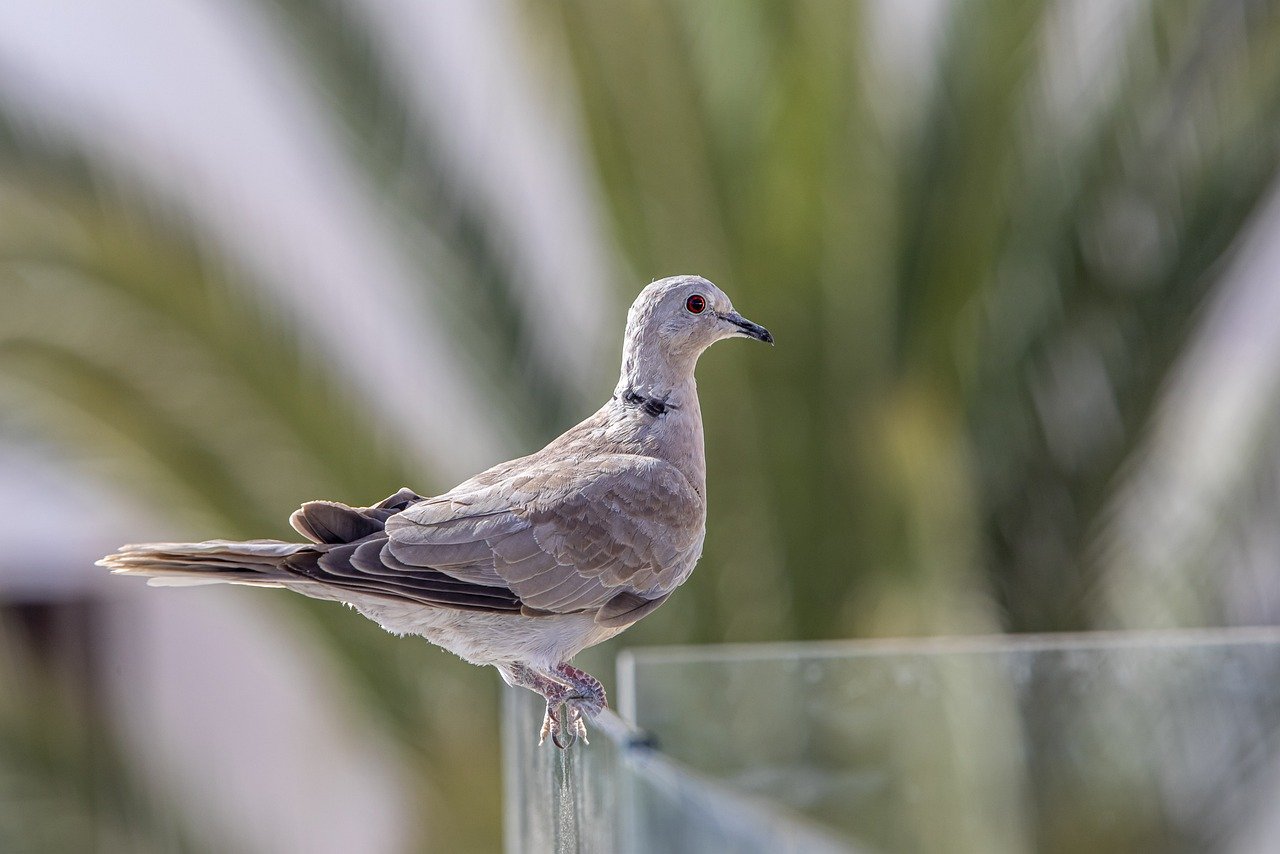The African Collared-Dove (Streptopelia roseogrisea), also known as the Barbary Dove, is a medium-sized bird belonging to the family Columbidae. This species is native to the Sahel region of Africa but has been introduced to other parts of the world, including the Middle East and North America. Here is an overview of the African Collared-Dove:
Appearance
Adult Dove:
- Size: The African Collared-Dove is about 26-28 centimeters in length.
- Coloration: It has a pale pinkish-grey plumage. The underparts are generally lighter, almost white.
- Distinctive Features: A characteristic black half-collar around the nape, which is the defining feature of this species.
- Eyes: The eyes are dark, with a small black iris surrounded by a pale eye-ring.
Habitat
- Preferred Habitats: They are adaptable and can be found in a variety of habitats, including savannas, open woodlands, agricultural areas, and suburban gardens.
- Geographic Range: Native to the Sahel region, extending from Mauritania and Senegal in the west to Sudan and Ethiopia in the east. They have also been introduced to other parts of the world.
Behavior
- Feeding: African Collared-Doves primarily feed on seeds, grains, and occasionally small insects. They often forage on the ground.
- Breeding: They are known for their simple stick nests, usually placed in trees, shrubs, or even man-made structures. The female typically lays two white eggs.
- Vocalization: They have a distinctive three-part cooing sound, often described as “coo-COO-coo,” which can be heard frequently during the breeding season.
Life Cycle
Eggs:
- Appearance: White and oval-shaped.
- Incubation: Both parents share the responsibility of incubating the eggs, which hatch in about two weeks.
Chicks:
- Appearance: The chicks are initially covered in down and are altricial, meaning they are born relatively undeveloped and require significant parental care.
- Development: They fledge approximately two to three weeks after hatching but remain dependent on their parents for a while longer.
Identification Tips
- Collar: The distinctive black half-collar around the nape is the most reliable feature for identification.
- Size and Shape: Medium-sized with a streamlined body, long tail, and small head.
- Coloration: Uniformly pale pinkish-grey plumage with lighter underparts.
Ecological Role
- Seed Dispersal: By consuming and dispersing seeds, they play a role in the propagation of various plant species.
- Prey and Predator Dynamics: They are preyed upon by birds of prey, mammals, and reptiles, thus forming an integral part of the food web in their ecosystems.
Conservation Status
- Population: The African Collared-Dove is not considered threatened. It has a stable and widespread population.
- Threats: Habitat loss and changes in agricultural practices can affect local populations, but overall, they are adaptable birds that thrive in various environments.
- Conservation Efforts: Efforts are minimal due to their stable population, but maintaining natural habitats and monitoring introduced populations are essential to ensure ecological balance.
Summary
The African Collared-Dove (Streptopelia roseogrisea) is a resilient and adaptable bird known for its distinctive black half-collar and pale pinkish-grey plumage. Native to the Sahel region of Africa, it thrives in various habitats, including savannas and suburban areas. With a diet primarily consisting of seeds and grains, these doves play a crucial role in seed dispersal. They have a stable population and are not currently threatened, though habitat conservation is still important to support their natural ecosystems. Their characteristic cooing and adaptable nature make them a common sight and sound in their native and introduced ranges.
Views: 2028
Subscribe to the newsletter:
